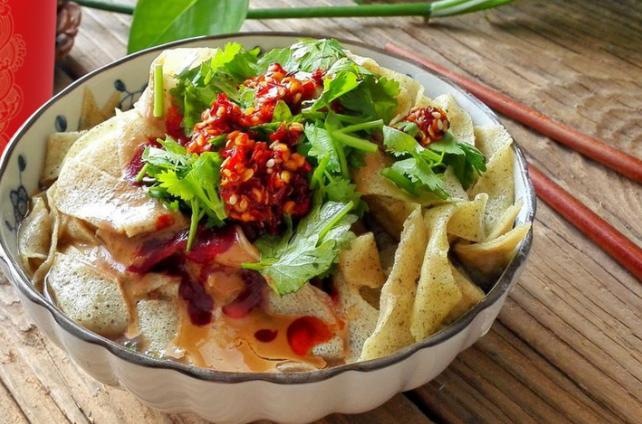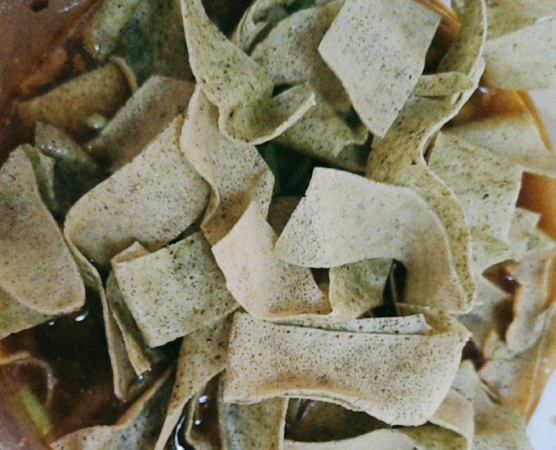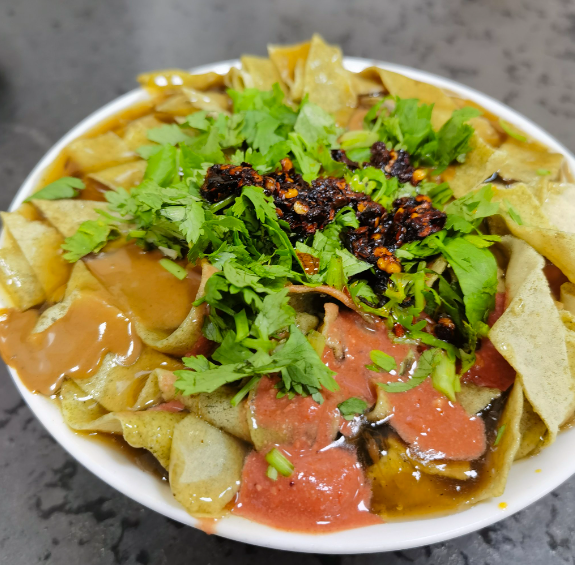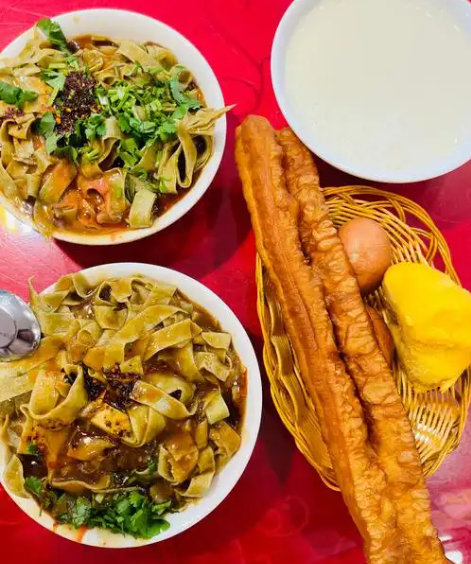A beloved morning ritual in Tianjin, Guobacai (锅巴菜or嘎巴菜) is a soul-warming dish that transforms crispy mung bean crepes into a savory, aromatic masterpiece.
Known as “Tianjin’s answer to cereal,” this 200-year-old breakfast staple—exclusive to the city—combines textures and flavors in a way that has captivated locals and intrigued food adventurers for generations.
From Imperial Kitchens to Street Stalls
Born during the Qing Dynasty, Guobacai traces its roots to Shandong Province’s pancake-making traditions. Migrant chefs in Tianjin reinvented leftover mung bean crepes (jianbing) by simmering them in a fragrant gravy, creating a thrifty yet hearty meal.
The name Guobacai literally means “pan-fried vegetable dish,” though ironically, it contains no vegetables—a nod to its humble, improvisational origins. By the 1920s, it became a breakfast icon, served in blue-and-white porcelain bowls at alleyway stalls.
The Art of Layered Flavors
- The Base: Paper-thin mung bean crepes are sliced into rhombus-shaped noodles, prized for their crispy-then-soft texture when soaked.
- The Gravy: A velvety broth made from pork bones, star anise, and soy sauce, thickened with sweet potato starch.
- The Toppings: A confetti of chopped cilantro, grated ginger, and pungent fermented tofu sauce (a Tianjin specialty).
- The Crunch: A final sprinkle of toasted sesame seeds and crushed peanuts.
The secret lies in timing: the crepes must soak just long enough to absorb the gravy’s umami without losing their bite.
Cultural Significance: More Than a Meal
- Breakfast Bonding: Tianjiners gather at dawn over steaming bowls, debating politics or sharing gossip—a ritual as vital as coffee culture in the West.
- Symbol of Resilience: During lean times, Guobacai’s use of leftover crepes symbolized resourcefulness. Today, it’s a UNESCO-listed culinary heritage dish.
- The “Crispy vs. Soft” Debate: Purists insist on brief gravy contact for maximum crunch; others prefer a porridge-like consistency.
Where to Savor Authentic Guobacai
- Da Fu Lai (Nanshi Food Street): A century-old shop using copper cauldrons for gravy and stone mills for crepes.
- Local Tip: Pair with Tianjin’s sesame seed cakes or crispy you tiao (fried dough) for a carb-loaded feast.


















No comments yet